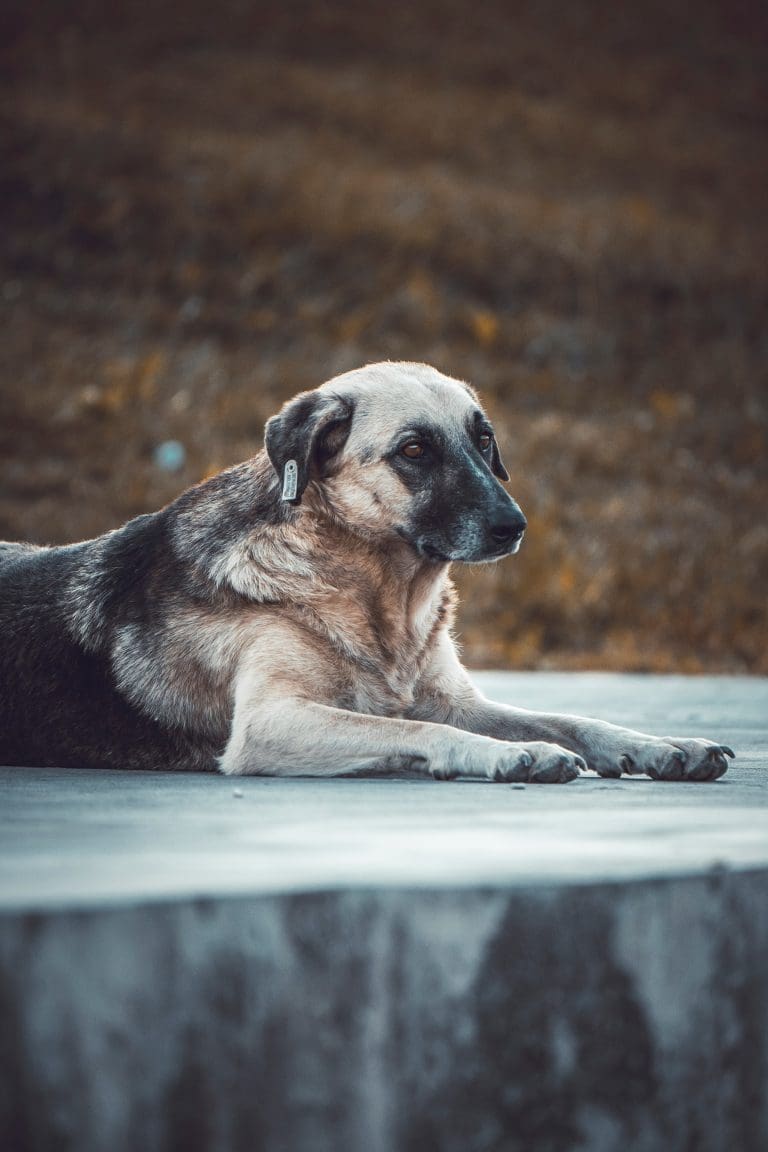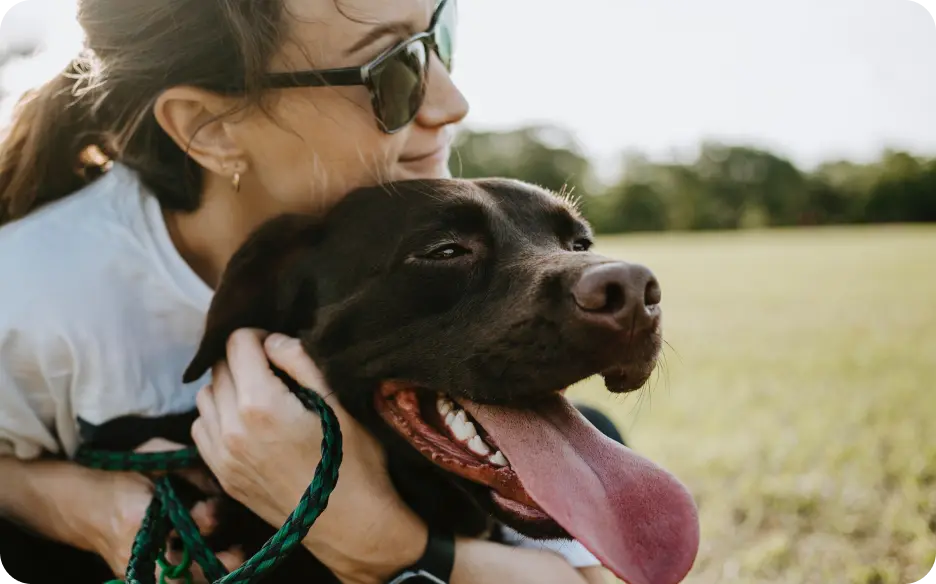How Often Do Dogs Go Into Heat?
Post Date:
December 10, 2024
(Date Last Modified: November 13, 2025)
Female dogs experience a recurring reproductive cycle with distinctive physical and behavioral phases that owners can learn to recognize and manage.
How often female dogs typically go into heat
Many domestic female dogs enter estrus approximately twice per year on average, which equates to about every six months.[1]
That average masks wide variation between individual animals and populations because breed, size, health, and environmental factors cause cycles to be more or less frequent in specific dogs.[1]
When owners are told a dog comes into heat “every X months,” it usually reflects a typical inter-estrus interval rather than a precise calendar rule — expect natural scatter of several weeks to a few months around the stated interval.[1]
Age of first heat and how it changes over a dog’s life
Small and toy breeds commonly reach their first estrus between about 6 and 12 months of age, while many large and giant breeds often have their first heat later, commonly between about 12 and 24 months of age.[2]
Cycle regularity often improves after the first few heats; many dogs have irregular timing for the first one or two years, then settle into a more predictable pattern by adulthood.[2]
Poor early nutrition, systemic illness, or delayed growth can postpone puberty, whereas early maturity and certain genetic lines can bring the first estrus earlier than typical ranges cited above.[2]
Stages of the canine heat cycle
The canine reproductive cycle is classically divided into four stages—proestrus, estrus, diestrus, and anestrus—with distinct hormonal changes during each phase.[3]
| Stage | Typical duration (days) | Key signs | Fertility |
|---|---|---|---|
| Proestrus | 7–10 days | Bloody vaginal discharge, swollen vulva, males attracted | No (female not receptive) |
| Estrus | 3–9 days | Reduced bleeding, straw-colored discharge, standing for males | Yes (most fertile window) |
| Diestrus | 60–90 days | Return to normal behavior; pregnancy or luteal phase changes | No (physiologically luteal) |
| Anestrus | 4–5 months | Reproductive quiescence | No |
The durations in the table above reflect commonly cited ranges; proestrus often spans about one week, estrus commonly lasts several days with the peak fertile window inside that span, diestrus can last roughly two months whether the dog is pregnant or not, and anestrus fills the interval between cycles.[3]
Hormonal markers include rising estradiol in proestrus and an LH surge near ovulation, followed by a sustained progesterone rise in diestrus; these endocrine patterns drive the behavioral and physical signs owners observe.[3]
Typical timeline and interval between heats
The visible heat episode — the period when signs like discharge and vulvar swelling are present — most commonly lasts about 2 to 3 weeks.[4]
Between complete heat episodes, many dogs have an inter-estrus interval of roughly 6 months, although intervals of 4 months up to 12 months occur in some individuals and breeds.[4]
Shorter-than-expected intervals (for example, heats every 3–4 months) and prolonged intervals (heats more than 12 months apart) can both be abnormal patterns that merit veterinary evaluation when they are new or accompanied by other signs of illness.[4]
How breed, size, and individual factors affect frequency
Small and toy breeds frequently show shorter inter-estrus intervals and may come into heat on average closer to every 4–6 months, while many large and giant breeds commonly cycle about once per year or every 9–12 months.[5]
Genetics, body condition, nutritional status, and prior reproductive events (litters, false pregnancies, or spay history) alter cycle timing and expression between individual dogs even within the same breed.[5]
Environmental factors such as household stability, photoperiod changes, and exposure to intact males may influence subtle timing shifts, although the basic cyclic physiology remains internally regulated.[5]
Common signs and behaviors during heat
Owners can look for a combination of physical and behavioral changes to identify onset and progression of heat:
- Physical signs: visible bloody to straw-colored vaginal discharge and a swollen vulva; bleeding typically starts in proestrus and lessens during estrus.[3]
- Behavioral changes: increased scent marking, restlessness, more attention-seeking, and in estrus a willingness to stand for mounting or mating.[3]
- Subtle or atypical presentations are common: some dogs show minimal bleeding but clear behavior changes, while others display marked physical signs with only brief behavioral receptivity.
Managing a dog during heat: practical care and hygiene
Sanitation measures such as washable pads, dog-specific diapers, or limiting access to light-colored furniture help contain discharge and reduce cleanup; choose laundering-friendly materials and change them frequently to avoid moisture-related skin irritation.
Confinement when unsupervised and secure fencing outside are important because intact males can be attracted from yards away and accidental breeding can occur quickly if a bitch is unsupervised during estrus.[4]
Exercise can and should continue during heat with precautions: prefer leashed walks in low-traffic areas, avoid off-leash dog parks, and monitor interactions with other dogs for unwanted attention or aggression.
Breeding, pregnancy risk, and preventing unwanted litters
The most fertile window for a bitch is usually within a few days of standing behavior during estrus, commonly described as a roughly 3–5 day period when conception probability is highest.[3]
To prevent unplanned litters, rely on layered control: strict supervision, physical barriers such as secure kennels and fenced areas, and permanent sterilization (spay) when breeding is not intended.[2]
Temporary medical contraception and progesterone injections exist but have potential side effects and are generally not recommended as routine prevention without veterinary oversight; discuss options, timing, and risks with your veterinarian before use.[2]
If accidental mating occurs, contact your veterinarian promptly; they can advise on gestation testing timing, options for managing an unintended pregnancy, and monitoring plans for maternal health.[4]
Health risks and when to seek veterinary care
Pyometra, a uterine infection, is a serious risk in intact older females and most commonly develops in the weeks to months after estrus; it requires prompt veterinary diagnosis and often surgery.[1]
Seek veterinary attention if bleeding is excessively heavy or prolonged beyond the typical heat duration, if the dog shows fever, lethargy, loss of appetite, vomiting, or signs of abdominal pain, or if discharge has a foul odor suggesting infection.[4]
Provide the veterinarian with a recent timeline of signs (onset date of discharge, changes in behavior, any mating incidents) and your dog’s age, breed, vaccination status, and any medications to help with diagnosis and treatment planning.
Spaying: timing, effects on heat cycles, and pros/cons
Ovariohysterectomy (spay) removes the ovaries and uterus and permanently eliminates subsequent heat cycles and the risk of pyometra and ovarian disease.[2]
Timing recommendations vary by patient and clinic; many veterinarians recommend spaying before the first heat to maximize reduction in mammary tumor risk, while for some large-breed dogs clinicians may recommend waiting until skeletal maturity to reduce certain orthopedic risks — discuss timing with your veterinarian based on breed and individual health.[2]
Benefits of spay include elimination of heat-related management, prevention of unwanted litters, and reductions in some reproductive cancers; potential risks include surgical complications and long-term metabolic or orthopedic considerations that should be weighed on a case-by-case basis.[5]
Sources
- merckvetmanual.com — Merck Veterinary Manual.
- avma.org — American Veterinary Medical Association.
- aaha.org — American Animal Hospital Association (clinical resources).
- vcahospitals.com — VCA Animal Hospitals (pet health information).
- vet.cornell.edu — Cornell University College of Veterinary Medicine.






